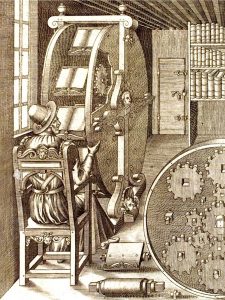On this eve of Independence Day, I take my title from an article by Paul Allen Miller.[1] Allen and I crossed paths briefly at the University of Texas more than forty years ago, and I learned that what he has to say is always worth thinking about. This article is no exception.
“Tyranny, Fear, and Parrhesia” was written when the first Trump administration was well under way, but it opens with a story from the day after the 2016 election. Miller, then a vice provost at the University of South Carolina, looked around the room at a meeting of senior administrators and said, “We are like Heidegger in 1932.”
Miller reports that his colleagues “stared at him” and said nothing. In November of 2016, comparing the election of Donald Trump to the German elections of 1932 that brought Hitler to power probably seemed a bit overwrought. And implicitly comparing the good people who administer a great American university to Martin Heidegger, the Nazi Rector of Freiburg University—and a philosopher who, despite that, cannot be ignored—verges on insult and perhaps accounts for the stares.
Miller was not wrong in 2016, only premature. On July 4, 2025, things are much worse, and at the same time much clearer. In recent weeks we have seen one great American university after another capitulate to pressure from the Trump administration—which is to say, agree to the demands or whims of someone who can now fairly be called an autocrat. University presidents resign under pressure from the White House. Columbia, Harvard and Penn make deals; other schools follow. Yet none of the presidents, provosts, deans, and other administrators who have signed off on these deals can be compared to Heidegger, who believed in and enthusiastically promoted the Nazi takeover of German universities. If asked, the American administrators would no doubt say something like what Acting President of Columbia Claire Shipman said in an email to alumni on June 12: It is “essential to restore our research partnership with the government, if possible,” and “following the law and attempting to resolve a complaint is not capitulation.” Miller’s staring colleagues, he reports, felt that their first obligation was “to preserve the institution.” They had to “weather the storm.” They would just “ignore these people and do the right thing.” It was important not to be “self-indulgent and irresponsible.”
As a former administrator, I sympathize with these sentiments. I suspect I would have echoed them if I had been at that meeting. The welfare and continued existence of the institution must come first. Now, however, all seems different. The changes in our Republic in just the first few months of the Trump presidency seem to me to demand a different response. Parrhesia, the third word in Miller’s title, means “frankness of speech.” It is the appropriate word for the speech of a philosopher who addresses a tyrant and takes responsibility for both the truth of his words and the consequences of saying them. It is time for those of us in academe who can to become parrhesiasts. Our institutions may may become poorer and smaller, but our souls will not, and our Republic may be saved along with them.
~Lee T. Pearcy
July 3, 2025
[1] Miller, Paul Allen. “Tyranny, Fear, and Parrhesia: Truth in the Neoliberal University, or ‘How Do I Know I’m Not Heidegger?’” Symplokē, vol. 29, no. 1/2, 2021, pp. 179–95. JSTOR, https://www.jstor.org/stable/48642811. Accessed 1 July 2025.


